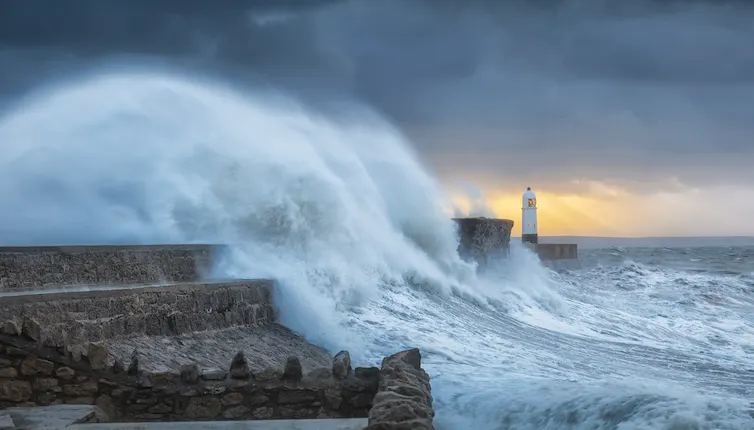The Importance of Planning for Extreme Events

Extreme events, such as hurricanes, floods, wildfires, and heat waves, are becoming more frequent and severe due to climate change. These events can have devastating impacts on people, communities, and ecosystems, causing loss of life, property damage, and long-term economic and social consequences. Therefore, it is crucial to plan for extreme events to minimize their impacts and ensure the safety and well-being of all.
The first step in planning extreme-events is to understand the risks and potential impacts. This involves assessing the likelihood and severity of different types in a particular area, as well as identifying vulnerable populations, infrastructure, and ecosystems. By using data and modeling tools, planners can develop scenarios and projections of potential impacts, and prioritize actions accordingly.
Once the risks and impacts are understood, the next step is to develop a comprehensive and integrated plan that involves multiple stakeholders and addresses all aspects of emergency management, including prevention, preparedness, response, and recovery. This includes identifying roles and responsibilities, developing communication and warning systems, establishing evacuation and sheltering procedures, and ensuring the availability of essential supplies and services.
It is important to involve and engage the community in all phases of planning, as they are often the first responders and can provide valuable insights and knowledge about local conditions and needs. This can include conducting outreach and education campaigns, establishing community networks and partnerships, and involving diverse voices and perspectives.
In addition to emergency management, planning for extreme-events also involves building resilience and adaptive capacity, both at the individual and community levels. This can include investing in infrastructure and technology that can withstand extreme conditions, promoting sustainable practices that reduce vulnerabilities and enhance ecosystem services, and fostering social and economic networks that can support recovery and rebuilding.
Finally, planning for requires continuous monitoring, evaluation, and adaptation to changing conditions and new information. This involves reviewing and updating plans regularly, conducting post-event assessments, and integrating lessons learned into future planning efforts.
Here are some additional points on the importance of planning for extreme-events:
Protecting critical infrastructure: Extreme-events can cause significant damage to critical infrastructure, such as power grids, water treatment plants, and transportation systems. Planning for extreme-events can help identify vulnerabilities in infrastructure and prioritize investments in resilience and redundancy to ensure that essential services are not disrupted during and after extreme-events.
Supporting economic recovery: Extreme-events can have long-term economic consequences, including business disruptions, job losses, and decreased property values. Planning can help support economic recovery by ensuring that businesses are prepared and can recover quickly, by providing financial assistance to affected individuals and businesses, and by promoting economic diversification and resilience.

Reducing insurance costs: Extreme-events can result in high insurance costs, particularly for those who are most vulnerable to the impacts of these events. Planning for can help reduce insurance costs by improving risk management practices, promoting risk reduction measures, and providing incentives for investments in resilience.
Addressing equity and social justice concerns: Extreme-events can disproportionately impact certain communities, particularly those that are already marginalized or disadvantaged. Planning for can help address equity and social justice concerns by ensuring that vulnerable communities are prioritized in planning efforts, by engaging these communities in the planning process, and by providing targeted resources and support to help them prepare and recover from extreme-events.
Promoting innovation: Planning can also promote innovation and creativity, as it requires finding new and effective ways to address complex and unpredictable challenges. This can lead to new technologies, strategies, and practices that can be applied to other areas of environmental and social concern, leading to broader benefits beyond just extreme event planning.
Protecting public health: Extreme-events can have significant impacts on public health, including heat stress, waterborne diseases, and mental health issues. Planning can help protect public health by providing early warning systems, establishing emergency medical services, promoting safe drinking water and sanitation, and providing mental health support.
Mitigating climate change: Extreme-events are a result of climate change, which is caused by human activities. Planning can help mitigate climate change by promoting sustainable practices, reducing greenhouse gas emissions, and promoting renewable energy and energy efficiency.
Preserving biodiversity: Extreme-events can have significant impacts on biodiversity, including habitat loss, species extinction, and changes in ecosystem function. Planning can help preserve biodiversity by identifying areas of high conservation value, promoting restoration of degraded ecosystems, and promoting sustainable land use practices.
Strengthening international cooperation: Extreme-events can have transboundary impacts, crossing borders and affecting multiple countries. Planning can promote international cooperation by sharing knowledge, resources, and expertise, and by establishing networks for collaboration and support.
Protecting cultural heritage: Extreme-events can also impact cultural heritage sites and artifacts, which are an important part of our collective history and identity. Planning for extreme-events can help protect cultural heritage by identifying vulnerable sites and artifacts, promoting disaster preparedness and response plans, and providing financial support for restoration and recovery.
In summary, planning for extreme events is crucial to protect people, communities, and ecosystems from the impacts of climate change. It involves protecting critical infrastructure, supporting economic recovery, reducing insurance costs, addressing equity and social justice concerns, and promoting innovation. By planning, we can ensure that we are better prepared and more resilient in the face of an uncertain future.

In conclusion, extreme events are becoming more frequent and severe due to climate change, and planning for these events is crucial to minimize their impacts and ensure the safety and well-being of all. This requires understanding the risks and potential impacts, developing comprehensive and integrated plans that involve multiple stakeholders and address all phases of emergency management, building resilience and adaptive capacity, involving and engaging the community, and continuously monitoring, evaluating, and adapting to changing conditions. By planning for extreme-events, we can protect ourselves, our communities, and our planet from the worst effects of climate change.


























































































































































































































































































































































































































































































































































































































































![Fixing [pii_email_aa0fea1a78a192ae7d0f] Microsoft Outlook Error](https://www.huffenpost.com/wp-content/uploads/2023/03/What-Causes-the.jpg)
![Fixing [pii_email_aa0fea1a78a192ae7d0f] Microsoft Outlook Error](https://www.huffenpost.com/wp-content/uploads/2023/03/How-to-fix-the-1-1024x1024.webp)
![Quick fixes for the [pii_email_dbd9dd084703ead3b9cf] Mail Error](https://www.huffenpost.com/wp-content/uploads/2023/03/How-to-Avoid-pii_email_b6b14f95f44a83737071-Outlook-Error-1024x576.jpg)
![How to fix the [pii_email_bbf95bff57a974a71da8] in Microsoft Outlook?](https://www.huffenpost.com/wp-content/uploads/2023/03/How-To-Solve-The-pii_email_9e750e335dfd9d75badb-Outlook-Error.webp)
![How to solve the [pii_email_b6b14f95f44a83737071] Outlook Error](https://www.huffenpost.com/wp-content/uploads/2023/03/How-to-Avoid-pii_email_b6b14f95f44a83737071-Outlook-Error.png)
![Ways to fix the "[pii_email_1fb861393abed78ab415] Error](https://www.huffenpost.com/wp-content/uploads/2023/03/pii_pn_56e685559f213991c933-Error-Causes-and-Solutions2.jpg)
![How to Fix the [pii_email_e2f55b4aa7bb667da6d9] Error](https://www.huffenpost.com/wp-content/uploads/2023/03/How-to-fix-the.webp)
![What Everyone Should Know About [pii_email_59ea919492dfc2762030]](https://www.huffenpost.com/wp-content/uploads/2023/03/pii_email_aa0fea1a78a192ae7d0f-Email-Error-and-Its-Solutions-1024x683.jpg)
![How to Fix the [pii_pn_5359771d15a46e7b88bf] Outlook Email Error](https://www.huffenpost.com/wp-content/uploads/2023/03/pii_email_57a4a2f20ec6813a8481-SMTP-Error-Solution-2.jpg)

























































































